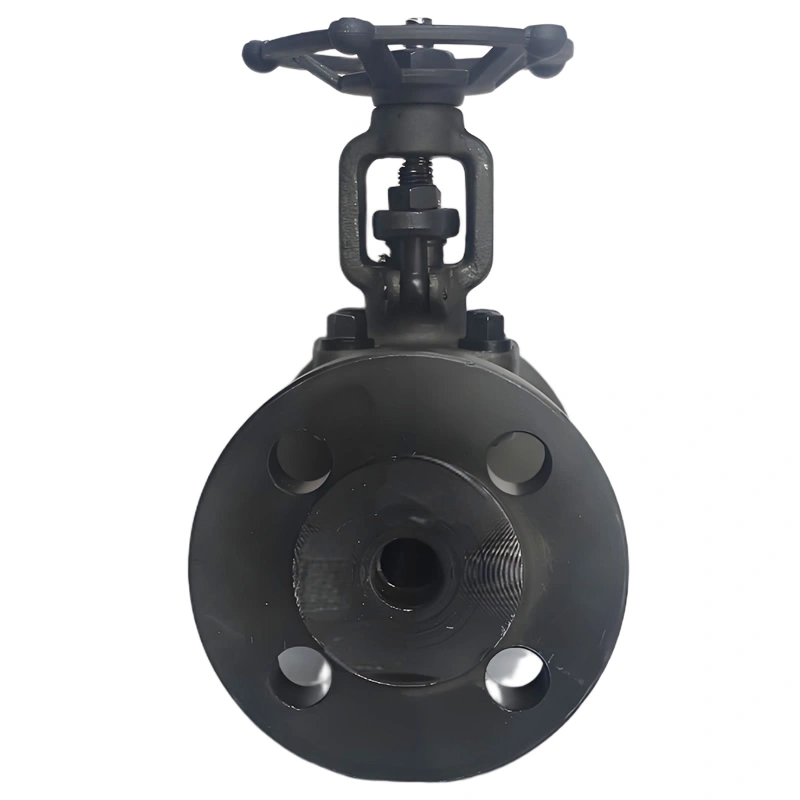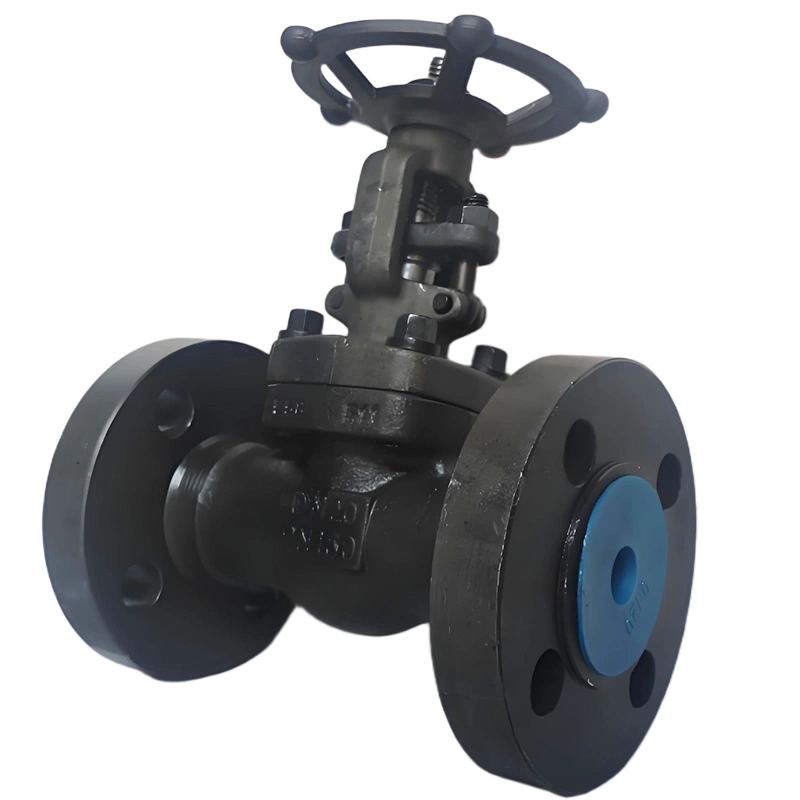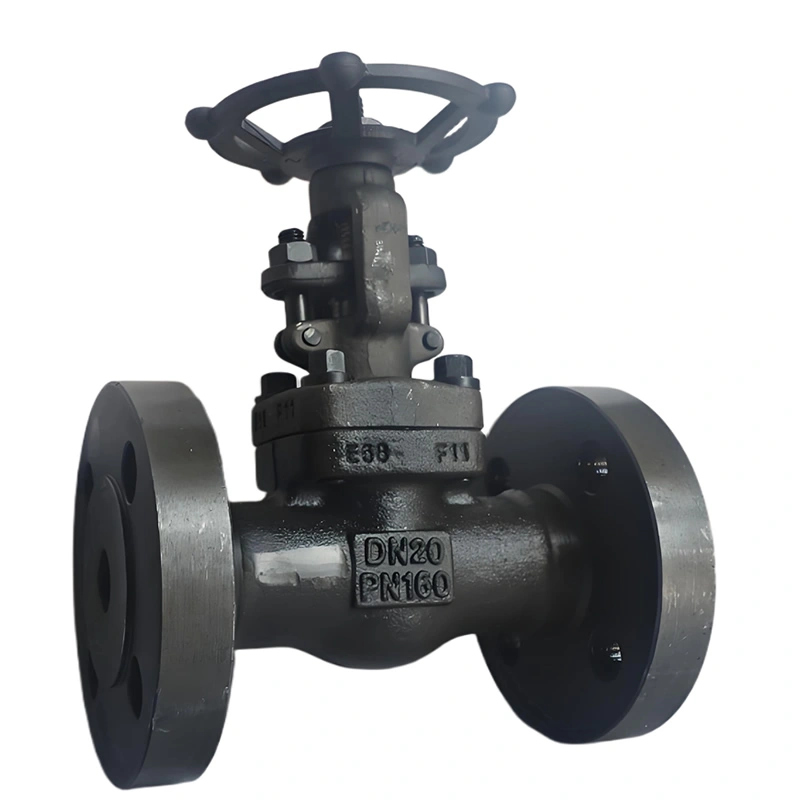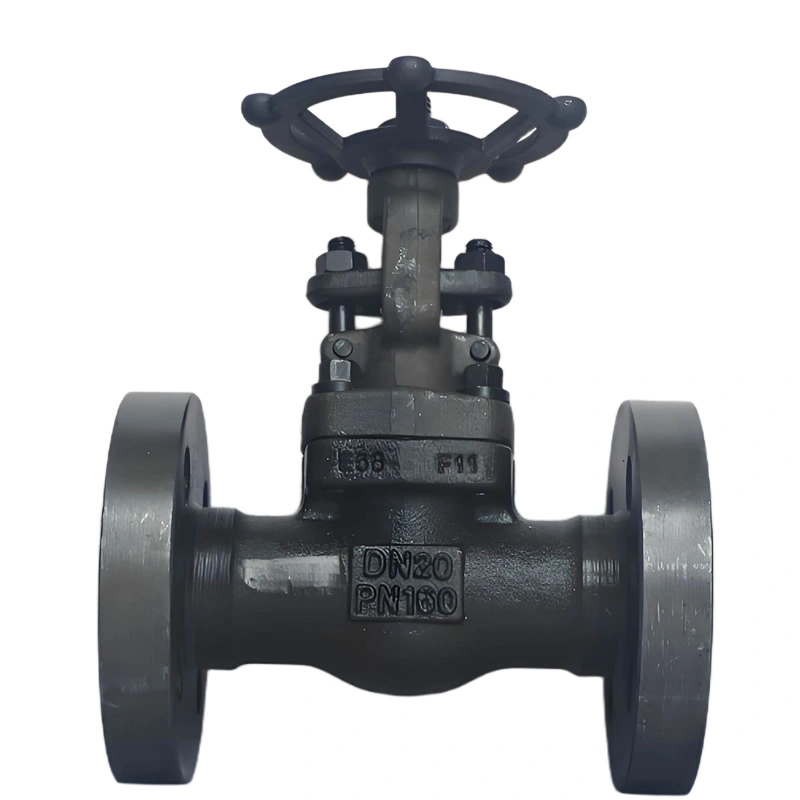- DN15 ~ DN200
- Class 1500 ~ 2500
- API 600, ASME B16.34
- Forged ASTM A182 F11 Alloy Steel
- RF Flange (ASME B16.5)
- Handwheel (Gearbox Optional)
- -29℃ ~ 593℃
- API 598 Class V (Metal Seat)
Specification
Newway DN20 PN160 F11 Alloy Steel Gate Valve with Raised Face Flange Connection and Handwheel Operation
I. Product Overview
Newway DN20 PN160 gate valve is a high-pressure flow control solution engineered for extreme industrial environments requiring robust performance and temperature resistance. Constructed with an F11 alloy steel body (1.25Cr-0.5Mo) and featuring a raised face flange connection with handwheel operation, it delivers reliable shut-off capabilities for high-pressure media such as steam, hot oil, and gas. Designed to operate at 16.0MPa (PN160) and -29℃~593℃, this valve complies with ASME B16.34 and API 600 standards, making it ideal for power generation, oil & gas, and chemical processing systems where high pressure, high temperature, and corrosion resistance are critical.
II. Key Attribute Specifications
|
Category |
Details |
|
Size |
DN20 (3/4”), suitable for small-diameter high-pressure pipelines requiring precise flow control. |
|
Pressure Rating |
PN160 (16.0MPa), designed for high-pressure systems such as power plant steam lines and offshore drilling manifolds. |
|
Body Material |
F11 alloy steel (ASTM A182 F11), a 1.25Cr-0.5Mo low-alloy steel with excellent high-temperature strength (tensile strength 485-655MPa) and creep resistance. |
|
Trim Components |
– Gate and Seat: F22 alloy steel (2.25Cr-1Mo) with hardfacing (stellite) for wear resistance.- Stem: F11 alloy steel, nitride-treated for corrosion and scratch resistance. |
|
Connection |
Raised face flange (ASME B16.5), ensuring tight sealing with companion flanges via spiral-wound gaskets, compatible with high-pressure pipeline systems. |
|
Actuation |
Handwheel operation with a worm gear reducer, providing mechanical advantage for easy operation under high pressure. |
|
Temperature Range |
-29℃~593℃, suitable for high-temperature media like superheated steam and hot oil. |
|
Design Standards |
ASME B16.34 (valve dimensions), API 600 (gate valves for petroleum and natural gas industries), ASTM A182 (F11 material specifications). |
III. Feature Description
Rising Stem Design: The valve features a rising stem, where the stem moves upward as the valve opens, providing a visual indication of the valve position. This design prevents stem rotation within the packing, reducing wear and ensuring reliable sealing. In high-pressure steam systems, this visibility helps operators confirm valve status, critical for safe operation.
F11 Alloy Steel Performance: F11 alloy steel offers exceptional high-temperature strength and oxidation resistance, making it suitable for long-term service in environments up to 593℃. Its chromium and molybdenum content enhances corrosion resistance against steam and hydrocarbon media, outperforming carbon steel in high-temperature, high-pressure applications.
Hardfaced Seats and Gates: The gate and seat surfaces are hardfaced with stellite, a cobalt-chromium alloy, to minimize wear and leakage. This hardfacing withstands the erosive effects of high-velocity media, ensuring tight sealing even after thousands of cycles—vital for high-pressure systems where leakage can lead to energy loss or safety hazards.
Raised Face Flange Sealing: The raised face flange design, paired with spiral-wound gaskets, creates a metal-to-metal seal under high pressure. This prevents media leakage at the flange connection, even during pressure fluctuations common in power generation and oil & gas pipelines.
Worm Gear Handwheel: The handwheel is equipped with a worm gear reducer, reducing the torque required to operate the valve under high pressure. This allows for smooth, precise operation, even when the valve is under full PN160 pressure, reducing operator fatigue and ensuring accurate flow control.
IV. Manufacturing Processes
Forging and Heat Treatment: F11 alloy steel billets are forged to form the valve body, gate, and stem, eliminating internal defects and improving material density. Post-forging, components undergo normalizing and tempering (heat treatment at 675-705℃) to enhance toughness and stress resistance, critical for withstanding high pressure and temperature cycles.
Precision Machining: Key components such as the gate, seat, and stem are machined using CNC equipment to achieve tight tolerances. The gate and seat surfaces are ground to a smooth finish (Ra ≤1.6μm) before hardfacing, ensuring uniform contact and tight sealing. Flange faces are machined to meet ASME B16.5 standards, ensuring compatibility with pipeline flanges.
Assembly and Packing: The valve is assembled with precision, with the stem guided by bearings to ensure alignment. The packing system uses graphite-based packing rings, which are resistant to high temperatures and provide reliable sealing around the stem. The packing is compressed to prevent leakage without excessive friction, ensuring smooth stem movement.
Testing: Each valve undergoes rigorous testing, including:




